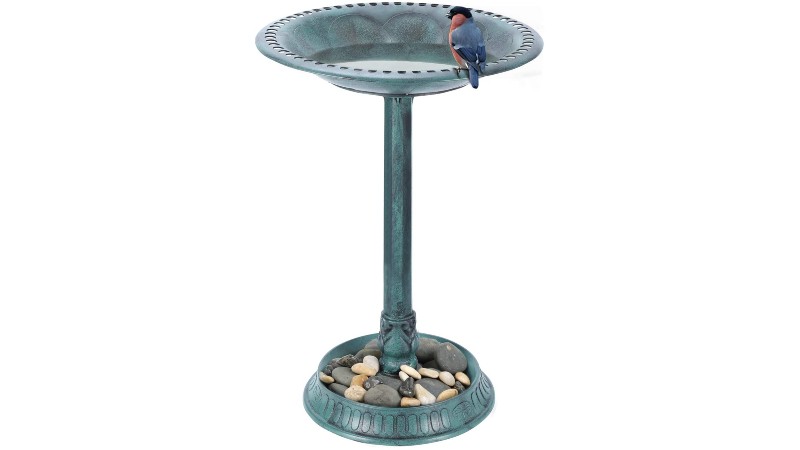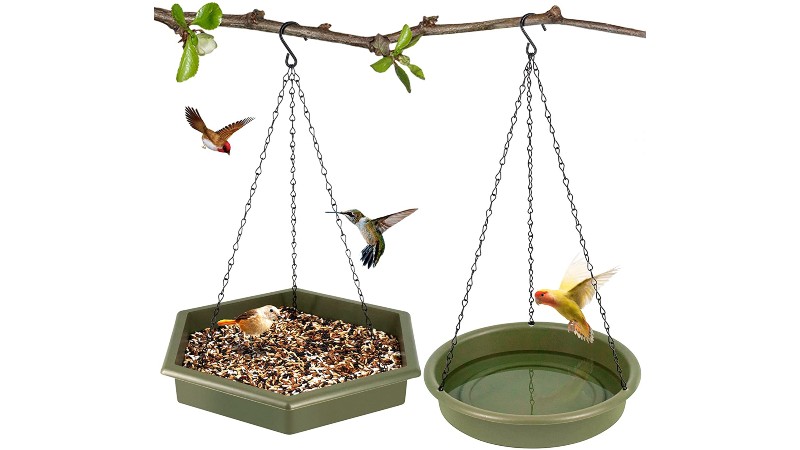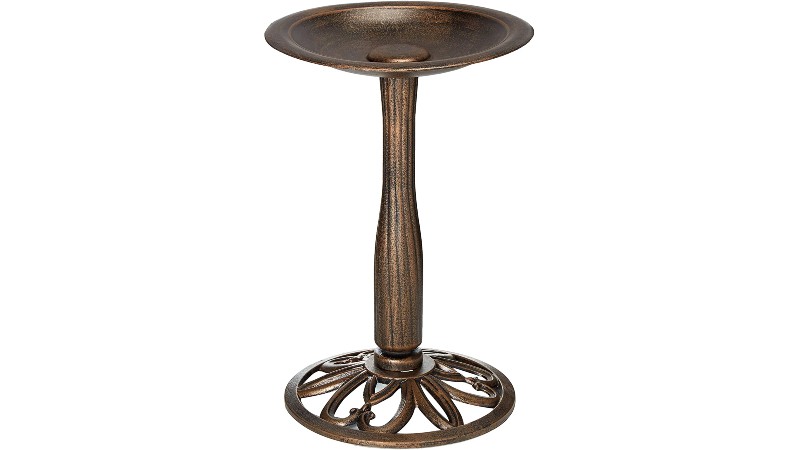Best bird bath
Here's a roundup of the best bird baths to decorate your yard and keep your flying friends happy.

A bird bath is a great way to take care of your feathered friends add some outdoor design. With different styles available, you can opt for a unique model where the birds can happily splash as they serenade you in your garden. Perhaps, a vintage design with rustic charm is what you're looking for? We have designs that accommodate antique and modern tastes alike. Decorate your garden and invite your feathered friends to splash around with this bird bath selection.

VIVOSUN 2-in-1 outdoor garden bird bath with flower planter base
Add some greenery
This bird bath is lightweight and weather-proof.
Pros:
- Weatherproof
- Lightweight and sturdy
- Measures 50-by-69.5 inches
- Features four fixture holes
- Flower planter base
Cons:
- Bowl may leak
- May have a strong odor upon arrival
This bird bath, standing 50-by-69.5 inches, makes a great addition to any yard as draws bathing birds and can be used as a flower planter. It will look great on your apartment patio or outdoor garden. For stability the sturdy base features four fixture holes, ensuring it doesn't tip over while resting or in use. The birds will love occupying this bath all season long.

GESAIL 75W all-season heated bird bath
Warm and mountable
This bird bath is like a little bird hot tub, heating up in cold temps.
Pros:
- Built-in heating element
- Automatic heating function
- Three different mounting options
- Hardware is included
- Removable basin for cleaning
Cons:
- May be smaller than expected
- Bath is quite shallow
This bird bath is perfect for the cooler months; it has a built-in heating element that keeps the water warm and your feathered friends content. The heating element has an auto-function that keeps the water at an ideal temperature. And the removable basin can be easily cleaned, ensuring the birds in your garden remain healthy. This model can be positioned on railings, trees, fences, or patios. All the mounting hardware is included.

MUMTOP flower bird bath
An attractive water-ready bloom
This bird bath is made from artful glass and steel.
Pros:
- Aesthetically pleasing flower design
- Made from glass and steel
- Three-prong stake
- Rustproof
Cons:
- Bath is quite small
- Structure can feel a little flimsy
This floral bird bath is made from glass and steel, making a beautiful garden accent piece. It features a delicate blooming bowl where little birds can splash in style. The bowl rests upon a gold-colored three-prong stem that keeps it securely in place.

SWSMSZ hanging bird bath and feeder set
Dual-purpose collection
This hanging bird bath also comes with a bird feeder.
Pros:
- Bath and feeder set
- Made from resin plastic
- Weather-resistant
Cons:
- Chains may rust with time
- May sway in the wind
If you're looking to create an all-inclusive experience for your feathered friends, this bird bath and feeder set is an excellent choice. The hexagonal seed tray and a circular water basin, made from sturdy, weather-resistant resin, will keep your winged outdoor guests happy. Hang this bird bath and feeder off a tree or patio.

Oakland Living Upland bird bath
Heirloom style with an ornamental base
This bird bath is made from rust-free aluminum and iron.
Pros:
- Rust-free aluminum and iron construction
- Vintage design
- Assembly instructions included
- Fade, chip, and crack-resistant
Cons:
- Smaller than expected
- Instructions may not be the easiest to follow
This antique bird bath is made from rust-free aluminum and iron. It provides an elegant vintage touch to any modern garden. The bath is fade-resistant, chip-resistant, and crack-resistant, making it a terrific option for storing in uncovered areas of your yard.
The bottom line
The best bird bath is both decorative and practical. The lightweight VIVOSUN 2-in-1 outdoor garden bird bath with flower planter base is both modern and rustic. Its welcoming design invites birds to splash while its flower planter base can be sprinkled with uplifting foliage.
If you're looking for a bird bath that makes a statement in your garden, the MUMTOP flower bird bath is a terrific option. The bowl is made from glass that resembles a delicate flower. It also has a three-prong stem is made from gold-colored steel, ensuring it is sturdy while remaining aesthetically pleasing.
Why trust us?
At GardeningEtc, we recommend the best products to enhance your life. As expert curators, we handpick products based on quality and usefulness to positively impact your day-to-day, from cart to doorstep. We take our responsibility seriously — testing products, reading reviews, and sourcing knowledgeable outlets to ensure our selections are worthy of your time and money. We deliver detailed product overviews, balancing objective information with subjective opinions, so making the best choice for your home and lifestyle is as easy as possible.
Camille Sanghera is a UX writer and copywriter for global brands as well as an author of self-help books. Although she has lived and traveled internationally, Camille is originally from British Columbia, Canada. She merges over 10 years of writing experience with a love of words to bring authenticity and human connection to every project. When not writing, Camille can be found exploring nature with her dog, sketching to music, or laughing with loved ones.
You can chat with Camille on Instagram at @projectpvo.
